Last week, David presented his latest work, titled “A structurally enhanced neck exoskeleton to assist with head-neck motion” at the International Symposium on Medical Robotics (ISMR) conference at Georgia Tech. Congrats to David!
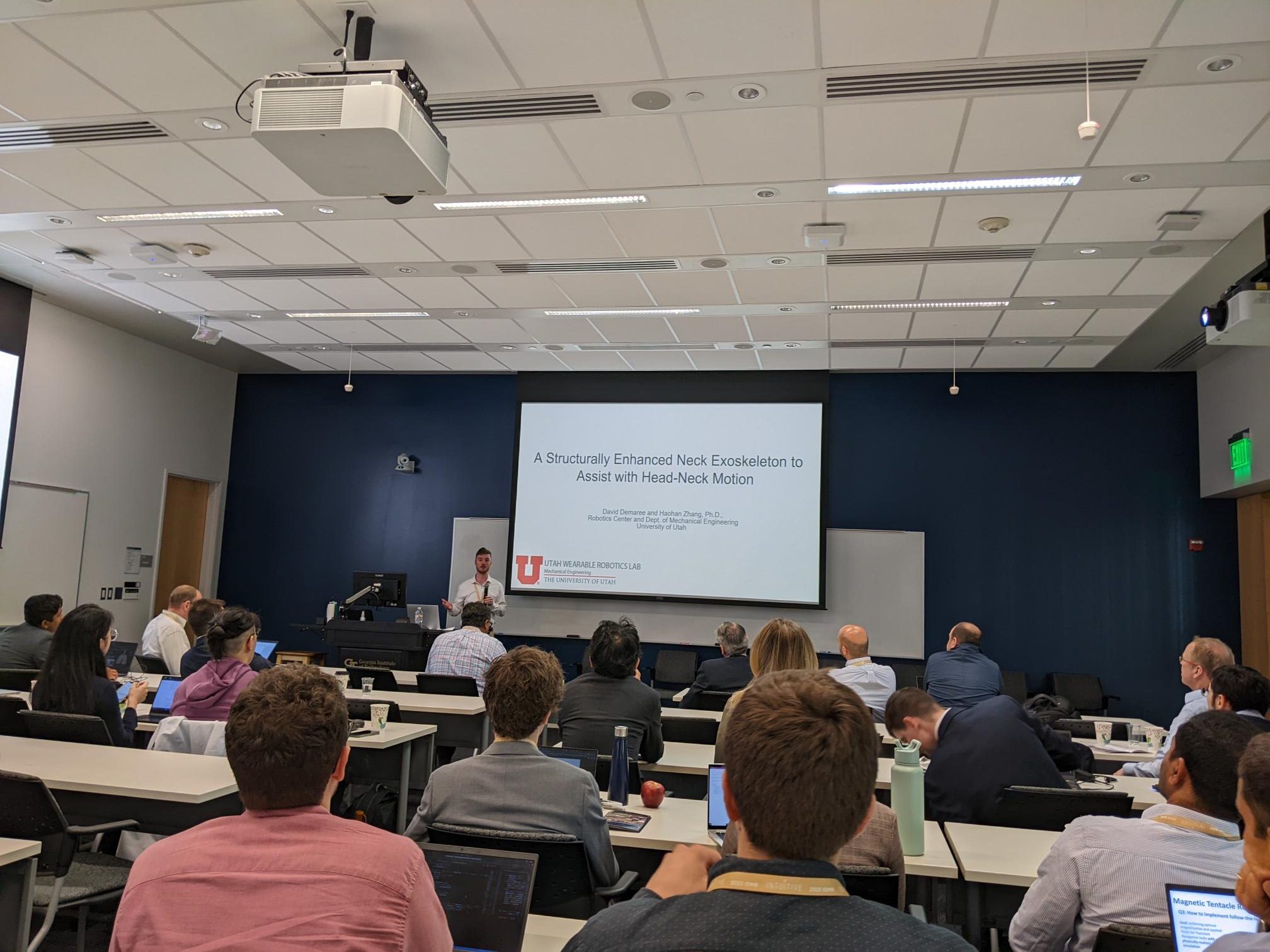
Last week, David presented his latest work, titled “A structurally enhanced neck exoskeleton to assist with head-neck motion” at the International Symposium on Medical Robotics (ISMR) conference at Georgia Tech. Congrats to David!

Congratulations to Jake who recently presented his summer research at the undergraduate research symposium. Jake’s project was on building a continuum robot and using a data-driven approach to model its kinematics and predict its motion.
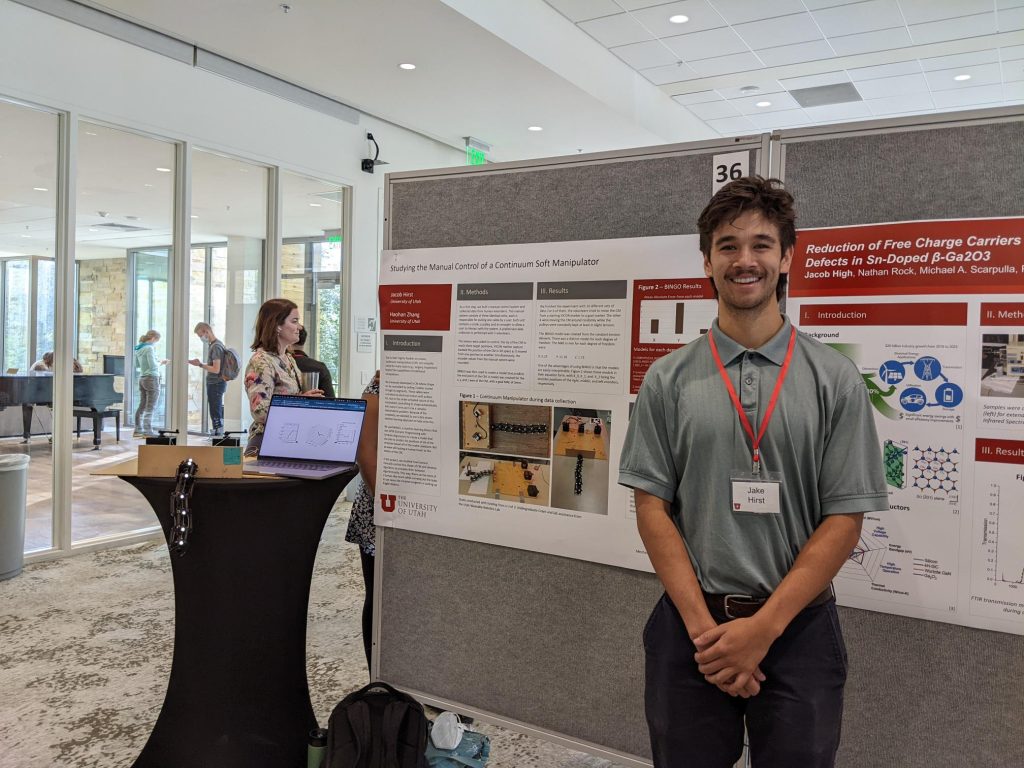
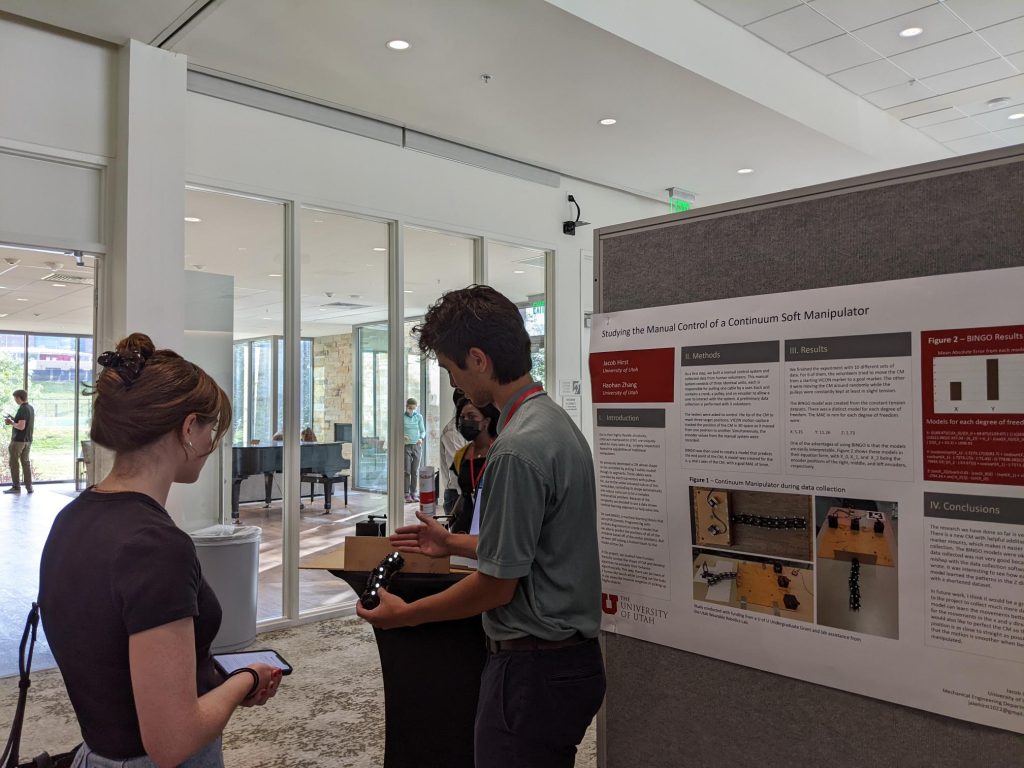
Congratulations to the senior design team (Tyler Bartunek, Ja-Rey Corcuera, Benjamin Hugo, and Gonzalo Tello) for completing their senior design project and presented it on Design Day. The team was advised by Dr. Zhang during Fall 2021 and Spring 2022. The project was on integrating multimodal sensing and haptics to create a smart exercise training system for domestic use. The product the team developed has received interests from local healthcare industry and the team is planning on pursuing a patent application.
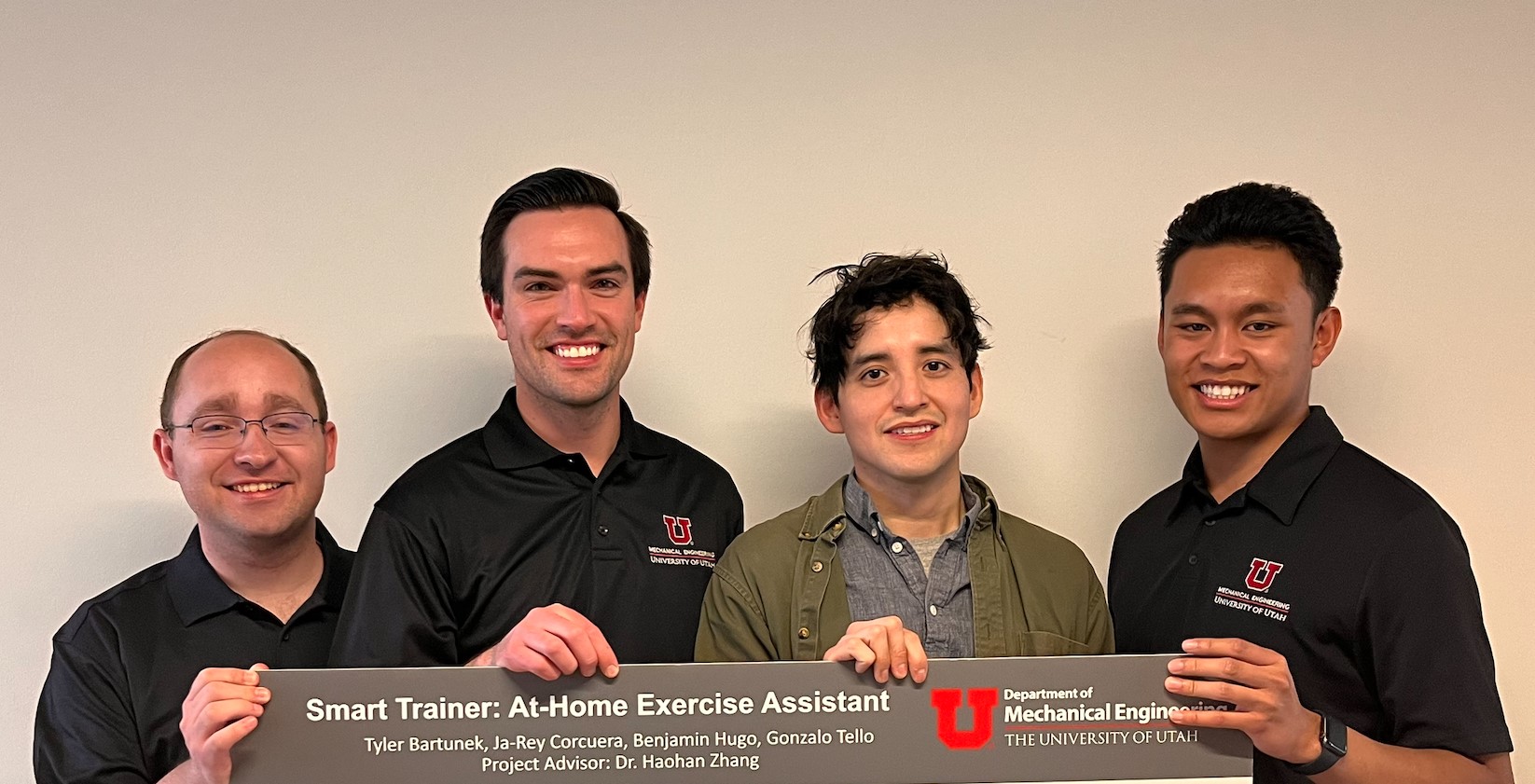
Rehabilitation using robots has shown promises in recent years. However, evaluating these robots with human subjects is expensive and time consuming. While translational research using animal models provides an alternative at a faster speed and a lower cost, the study process itself is often manual and labor intensive.
Our goal is to develop a wearable robot for animal research that could automate the research process. Such a robot system could also be used to evaluate rehabilitation principles with injured animals. The insights gained from animal research may be translated to human research and thereby shortening its testing cycle and lowering the cost.

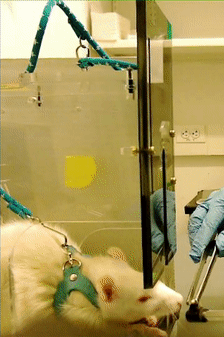
In our paper published on Journal of Mechanism and Robotics (JMR), we have detailed the kinematics design, physical implementation, and a preliminary testing of the robot with three healthy rats. As shown in the images above, the robot uses a special parallel structure and controls the force and position at the robot tip, which is where the wristband is attached to the animal’s forelimb. A force/torque sensor is installed at the end-effector to measure the force/moments applied to the animal.
To use this robot for rehab training, we have developed multiple force controllers. As an example, a force, which is proportional to the deviation from a desired forelimb path (e.g., a straight-line) was previously tested:

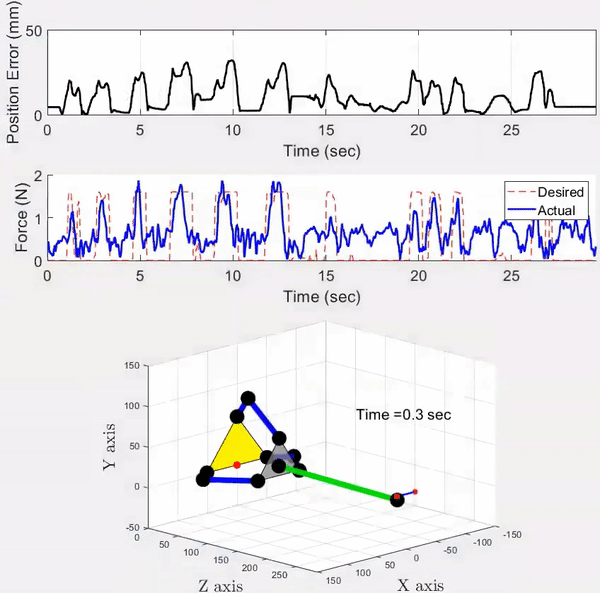
Our study on characterizing neck-shoulder mobility using a novel robotic neck brace was recently highlighted by NSF Research News. Read more through this link.
This study was also featured on a news article of Columbia Engineering. Read more through this link.Continue reading
A paper titled “A novel neck brace to characterize neck mobility after neck surgery in cancer patients” is now available on Wearable Technologies. This work was collaborated with researchers from the Robotics and Rehabilitation (ROAR) Lab at Columbia University.Continue reading